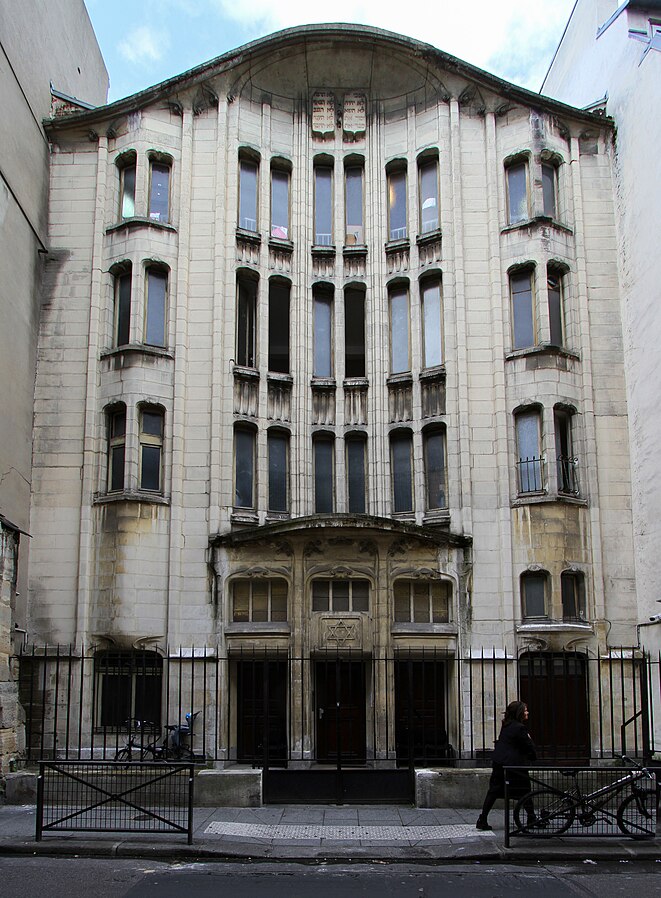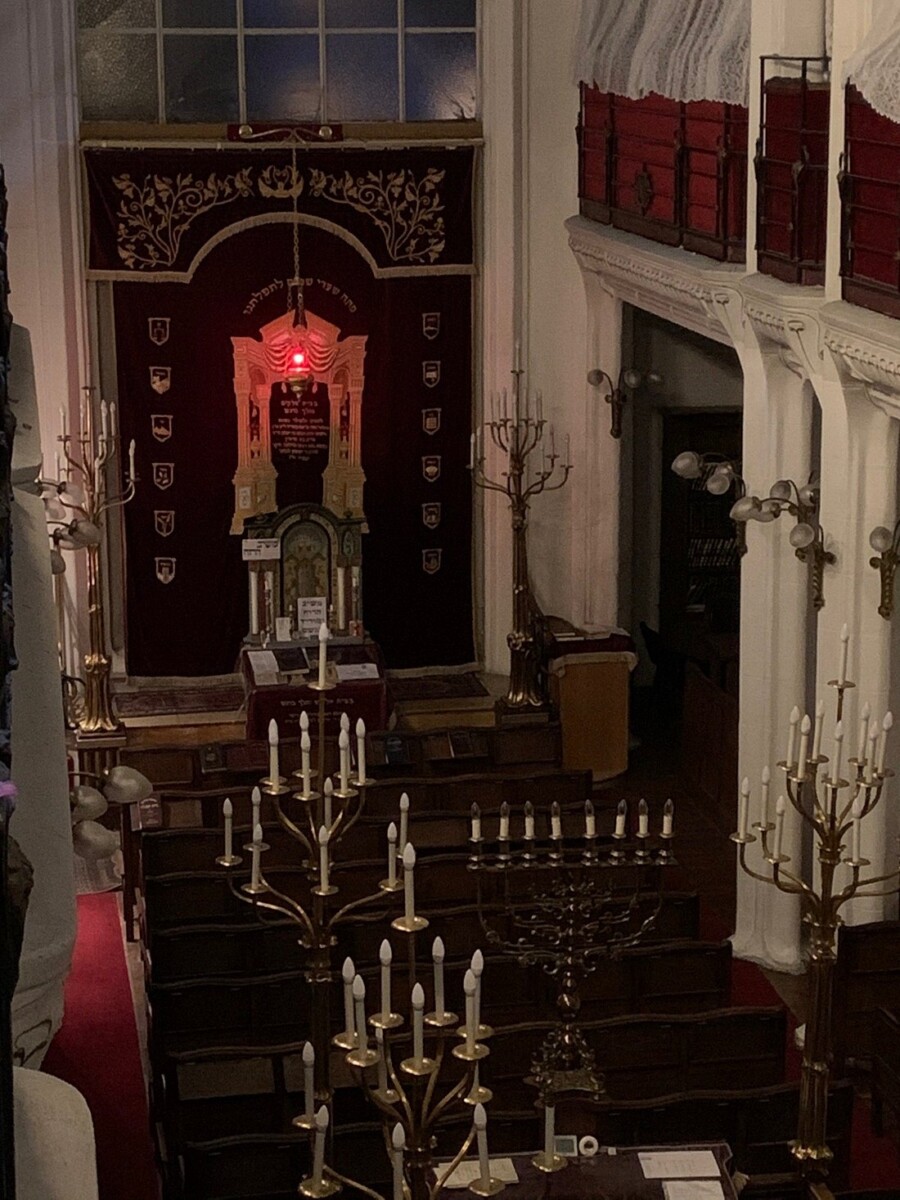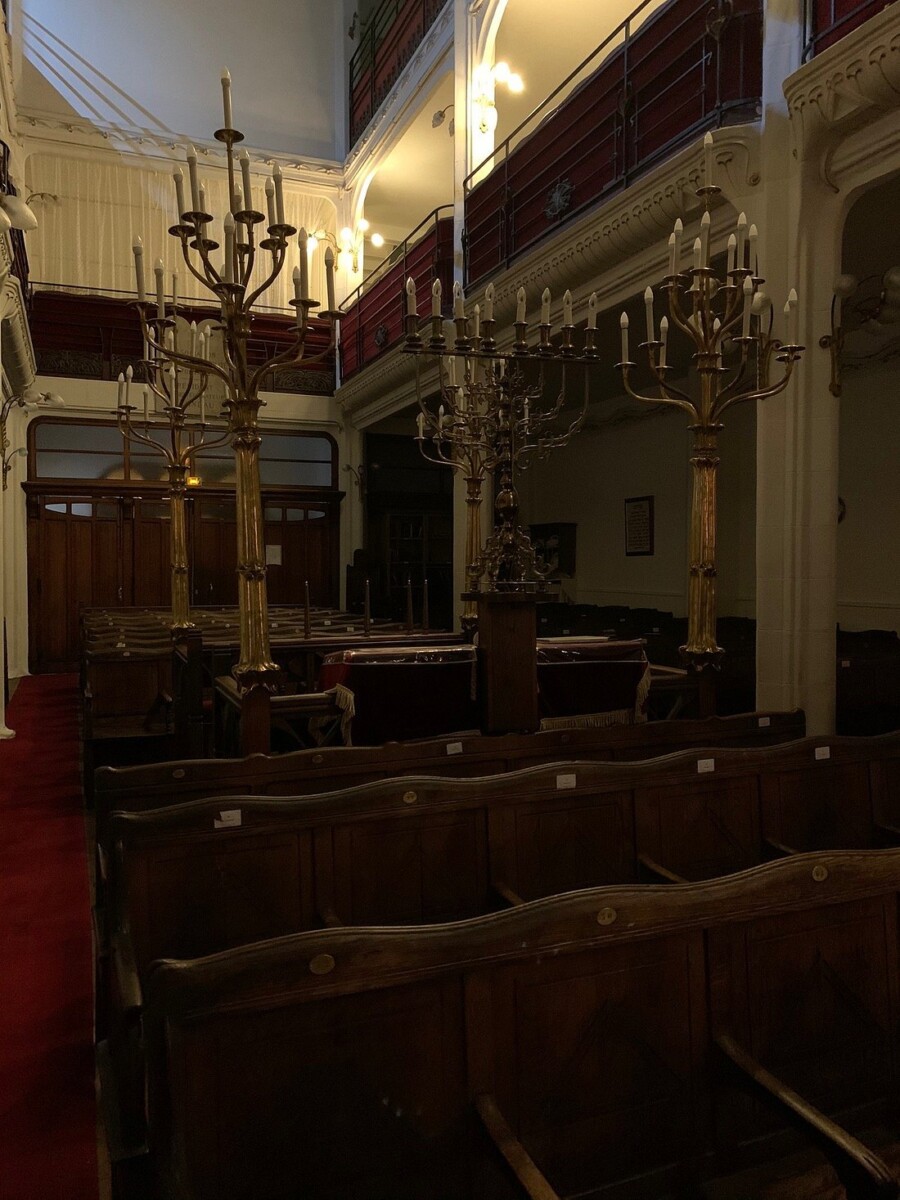Description
Discover the rich history of Paris through a tour of Synagogue Agoudas Hakehilos. This stunning architectural feat is a testament to the city’s diverse cultural heritage. Built-in the early 20th century, the synagogue boasts intricate details and a unique blend of styles that reflect the Jewish community’s history in Paris.
Visitors will be treated to a fascinating tour that delves into the synagogue’s history, architecture, and cultural significance. From the stunning stained glass windows to the beautiful mosaics, every detail of the synagogue tells a story. This tour is perfect for those interested in history, architecture, and Jewish culture. Don’t miss this opportunity to explore one of Paris’s hidden gems and learn about the city’s rich cultural heritage. Book your tour of Synagogue Agoudas Hakehilos today!
Photo Gallery
[su_content_slider style="dark" autoplay="0"] [su_content_slide] [/su_content_slide]
[su_content_slide]
[/su_content_slide]
[su_content_slide] [/su_content_slide]
[su_content_slide]
[/su_content_slide]
[su_content_slide] [/su_content_slide]
[/su_content_slider]
[/su_content_slide]
[/su_content_slider]
Top-Rated Tours in Paris
Table of Contents
- Description
- Photo Gallery
- Top-Rated Tours in Paris
- Historical Context
- Establishment and Significance
- World War II Impact
- Architecture
- Design by Hector Guimard
- Art Nouveau Influences
- Conservation and Recognition
- Religious Significance
- Orthodox Jewish Practices
- High Holy Days Observance
- Cultural and Community Role
- Heart of the Jewish Quarter
- Agoudas Hakehilos and the Arts
- Catastrophes and Rebuilding
- Dynamiting During the Liberation of Paris
- Restoration Efforts
Nestled in the historic Marais quarter of Paris, at 10 rue Pavée, stands one of the city’s architectural gems—the Agoudas Hakehilos Synagogue. Often referred to as the Pavée synagogue or the Guimard synagogue, this place of worship exemplifies Art Nouveau design courtesy of Hector Guimard, an architect renowned for his distinctive style that harmoniously blends form and function. Erected between 1913 and 1914, the synagogue’s undulating façade and organic motifs invite a closer look, as the building represents an aesthetic departure from traditional religious architecture.

Beyond its artistic significance, the synagogue has been an active center of Jewish life, commissioned by the Agoudas Hakehilos, a society dedicated to Orthodox Jewish communities. Amidst a neighborhood pulsating with cultural and historical richness, the synagogue’s distinctive façade harbors a testament to the enduring spirit and heritage of the Jewish community in Paris. The building was a haven for worship and a symbol of resilience, surviving the upheavals of the 20th century, including World War II.
Today’s Visitors are met with tranquility and reflection as they step inside. The harmonic blend of natural light and Guimard’s organic ornamentation creates an elevating and welcoming ambiance.
If you’re planning a visit, check the synagogue’s visiting hours in advance and be mindful of the cultural and religious importance of the site. For those captivated by the Parisian allure, a stopover at the Agoudas Hakehilos Synagogue enriches any itinerary, offering a unique narrative woven through its historic corridors.
Historical Context
The Agoudas Hakehilos Synagogue is a historical emblem of Jewish heritage in Paris, reflecting the city’s diverse cultural tapestry and turbulent past.
Establishment and Significance
The synagogue, established in 1913 and completed in 1914, was an architectural response to the influx of Orthodox Jews from Eastern Europe to Paris, France. Paris, a city celebrated for its architectural beauty, witnessed the rise of the Agoudas Hakehilos Synagogue as a gathering place for a community seeking religious and social solace in a new world.
The Agoudas Hakehilos society, a union of Eastern European Jewish immigrants, spearheaded the project with Joseph Landau, illustrating a significant phase in Jewish immigration to Western Europe.
World War II Impact
The Second World War cast a long shadow over the Agoudas Hakehilos Synagogue. Nazi occupants in France targeted Jewish institutions, leading to the persecution and deportation of the Jewish community. Many from the congregation were sent to Auschwitz, a grim reminder of the era’s atrocity. Nevertheless, the synagogue survived the war and stood as a testament to resilience and remembrance in the face of profound loss.
Architecture
Nestled in the historic Marais district of Paris, the Synagogue Agoudas Hakehilos is a testament to the unique fusion of religious function and Art Nouveau aesthetics, primarily shaped by the visionary French architect Hector Guimard.
Design by Hector Guimard
Hector Guimard, celebrated for his contributions to the Paris Metro entrances, channeled his signature Art Nouveau style into the Synagogue Agoudas Hakehilos on Rue Pavée. Utilizing white stone, the façade harmoniously blends with the traditional architecture of the Marais while still commanding its presence. Guimard’s design intricately weaves functionality with an artistic sensibility, particularly visible in the lighting and skylights that infuse the interior with a divine glow.
Art Nouveau Influences
Art Nouveau’s presence is felt throughout the synagogue’s structure, defining its artistic identity and historical significance. Guimard infused the building with fluid, organic lines, characteristic of Art Nouveau design, evident in the fittings and stained glass that adorn the interiors. This approach shaped the synagogue’s visual appeal and epitomized the era’s inclination towards integrating art with everyday life, bringing an aura of sanctity through design.
Conservation and Recognition
As a symbol of Jewish heritage and architectural innovation, the Synagogue Agoudas Hakehilos is designated a Monument Historique, France’s highest national recognition for historic sites. Conservation efforts maintain the integrity of Guimard’s vision, preserving the interior and exterior features, including the distinctively curved façade that evokes the feeling of entering a place set apart from the bustling city. This dedication to preservation underscores the building’s status as a revered Parisian landmark.
Religious Significance
The Synagogue Agoudas Hakehilos is a significant place of worship for the Orthodox Jewish community. It embodies traditional practices and the solemn observance of the High Holy Days.
Orthodox Jewish Practices
Agoudas Hakehilos Synagogue caters primarily to Orthodox Jews, with services reflecting Russian origin traditions. Rav Moredekhai Rottenberg, known as the RouV, ensured that services adhered to Orthodox customs. The benches and furnishings within the synagogue provide insights into its use as a house of prayer. Understanding the significance of these elements steeped in history, one feels the dedication to maintaining religious practices unchanged through time.
Visitors should note that the synagogue’s layout and decorum in services, such as the role of the Hazzan in leading prayers, are all intrinsic to these deep-rooted practices.
High Holy Days Observance
The most observed High Holy Days in the synagogue are Rosh Hashanah and Yom Kippur, when attendance surges and the synagogue blossoms with life. On Yom Kippur, the holiest day, the synagogue’s ambiance shifts to solemn reflection and prayer.
The Star of David is prominently featured, symbolizing faith and community. Services are led by Rav Haim Yaakov Rottenberg, the current RouV, who continues the traditions of his forebearers, blending respect for history with contemporary relevance.
Cultural and Community Role
The Synagogue Agoudas Hakehilos serves as a cornerstone of heritage and celebration of the arts within the Jewish community of Paris. Located in the historically vibrant 4th arrondissement, it embodies the Marais’s spirit and its people’s cultural pulse.
Heart of the Jewish Quarter
The Marais district, often referred to as Le Marais is home to the Pletzl, the Yiddish term for “little place,” the affectionate name for the Jewish Quarter in Paris. At the very heart of this quarter stands the Synagogue Agoudas Hakehilos. Known colloquially as the Rue Pavée Synagogue, this building is not merely a place of worship but also a central gathering point where community, culture, and history intertwine.
Joseph Landau, a prominent Union of the Communities member or “Agoudas Hakehilos”, played a vital role in its founding, reflecting the aspirations of the Eastern European Jewish immigrants who arrived in the Marais.
The Central Consistory of France, the institution overseeing Jewish congregations, recognizes the significance of this synagogue in supporting the religious, social, and educational activities of Paris’s Jewish residents.
The synagogue’s role extends beyond religious functions; it acts as a beacon for Jewish heritage in the city. It is closely associated with neighboring institutions like the Museum of Jewish Art and History, which further anchors the Jewish cultural identity within the Marais.
Agoudas Hakehilos and the Arts
Art Nouveau features distinctively mark the synagogue’s exterior, designed by the famed architect Hector Guimard. Walking through the Marais district, the synagogue’s architecture vividly stands out among the classic Parisian facades, a testament to the community’s integrated yet unique cultural footprint.
Cultural events within the synagogue reflect its artistic exterior. Music recitals, exhibitions, and theatrical performances are often held, celebrating traditional and contemporary Jewish artistry. These artistic endeavors capture the essence of the Union of Communities, bridging the gap between the sacred and the secular and highlighting the shtiblakh—small, intimate prayer houses that embody Eastern European traditions.
Catastrophes and Rebuilding
The history of the Agoudas Hakehilos, also known as the Guimard Synagogue, is marked by moments of destruction and subsequent renewal, reflecting the resilience of a community dedicated to preserving its religious heritage.
Dynamiting During the Liberation of Paris
During World War II, in August 1944, a tragic set of events unfolded that would severely damage the Agoudas Hakehilos Synagogue. As the tide turned against the occupying German forces during the Liberation of Paris, the extremist group Mouvement Social Révolutionnaire (MSR) planted explosives within this Art Nouveau-style religious building. The intended catastrophe was partially averted, thanks to the quick intervention of the French Authorities, who managed to defuse most of the explosives. However, a gas explosion occurred, leading to significant damage.
Rav Haim Yaakov Rottenberg, who served the synagogue then, witnessed the destruction and played a key role in spearheading immediate restoration efforts. Gershon Sirota, a renowned cantor, had echoed his prayers within the synagogue’s walls before this devastating event.
Restoration Efforts
The ravaged synagogue required substantial repair work after the dynamiting. Rav Moredekhai Rottenberg, following in the footsteps of his predecessor, led the rejuvenation of the Guimard Synagogue. The restoration paid meticulous attention to the distinctive elements of the Art Nouveau style, ensuring that the aesthetics that Hector Guimard originally envisioned were preserved.
The Agoudas Hakehilos Synagogue, now standing proudly on rue Pavée, serves as a house of prayer and a testament to its storied past and the enduring spirit of the Jewish community in Paris. Visitors today can appreciate the deliberate craftsmanship that protects the building’s soul while simultaneously being reminded of the power of perseverance through adversity.




